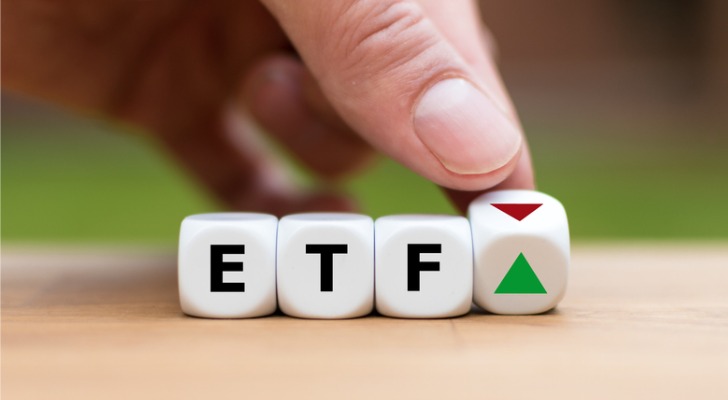Exchange-traded funds (ETFs) have gained immense popularity among investors for their simplicity, diversification and low fees. Like individual stocks, ETFs are traded on stock exchanges. But unlike individual investments, ETFs provide investors with exposure to diversified portfolios without the need to buy assets individually. However, with a vast array of ETFs available, selecting the right one for your portfolio can be daunting. It is important to understand how ETFs work, how to narrow your search, how to choose an ETF and ultimately, how to purchase these funds. Before investing in ETFs, this is what investors need to know.
A financial advisor can help you determine which ETFs are right for your portfolio based on your time horizon and financial goals.
How ETFs Work
ETFs are designed to track the performance of a specific index, commodity, bond or group of assets. This means when you invest in an ETF, you are essentially buying a share of a fund that aims to replicate the returns of its underlying assets.
An ETF is split into shares that are bought and sold on exchanges. In essence, the process is quite similar to trading individual stocks. When ETFs are redeemed, the assets are sold, and the proceeds are divided among the shareholders.
Being the unique hybrids they are, ETFs differentiate themselves from other types of investments like mutual funds or individual stocks. For example, unlike mutual funds that can only be traded at the end of the trading day, ETFs can be traded throughout the day as their prices fluctuate with the market. This provides investors with more flexibility and liquidity.
Additionally, they typically have lower expense ratios than mutual funds, making them more budget-friendly investment options.
Types of ETFs
Different types of ETFs cater to different investment strategies. For instance, sector ETFs focus on specific industries like technology, healthcare and utilities. This might be an appealing option if you believe in the growth potential of a particular sector and desire concentrated exposure.
Commodity ETFs, like SPDR Gold Shares (GLD), track the price of a commodity like gold, oil or corn. They can be an effective tool for inflation hedging and portfolio diversification during economic downturns.
Meanwhile, style ETFs target a specific investment style, allowing you to choose between growth and value investing.
- Growth investing: Growth investing targets companies projected to grow rapidly.
- Value investing: Value investing targets companies considered underpriced by the market.
Knowing how to choose ETFs using these strategies all depends on your investment philosophy. For example, investing in the iShares Russell 1000 Growth ETF (IWF) may align with an aggressive growth strategy.
How to Narrow Your Selection of ETFs
The right ETF is one whose characteristics meet your financial goals. To filter through the seemingly endless choices, consider aspects such as the ETF’s investment strategy, tracking error, expense ratio and liquidity.
Pause for a moment, and ask yourself these questions:
- What are my financial goals?
- What is my risk tolerance??
- How much exposure do I want to a particular sector or asset?
Things to Consider in Your ETF Selection

Selecting the right ETF for your investment portfolio requires careful consideration of these key factors.
Performance
Analyze the ETF’s historical performance over various timeframes and compare it with its benchmark index, as well as similar ETFs.
However, always remember that past performance does not guarantee future results. Stay objective, and do not let past successes cloud your judgment so you can avoid emotional investing.
ETF Structure
There are two types of ETF structures:
- Physically-backed ETFs: These own the assets they track.
- Synthetically-backed ETFs: These use derivatives to replicate the index’s performance.
Each type carries its risks and benefits that should be carefully considered before making an investment.
Trading Activity
Observe the ETF’s daily average trading volume. Generally, a higher volume means increased liquidity, which can lead to lower transaction costs. High trading activity also ensures that you can buy or sell shares without difficulty, even during periods of market volatility.
Market Position
Look at current market trends and economic indicators to better assess economic conditions. Depending on these factors, some ETFs may be better positioned for growth.
Established and widely recognized ETFs often come with advantages like lower expense ratios, but newer ETFs may offer unique exposure to niche markets.
Investment Choices
Identify the types of assets included in the ETF, as they can significantly affect its risk and return. For example, an ETF that incorporates risky assets may bring high potential returns but also carries considerable risk.
Level of Assets
The size of an ETF’s assets under management (AUM) can indicate its stability and popularity.
- Larger AUM may be a sign of investor trust, but it is essential to balance this factor with other considerations.
- Smaller, niche ETFs can offer unique opportunities but may carry slightly higher risks.
Be sure to carefully weigh your investment options to determine which ETF (and AUM) is best for you.
Underlying Index
The ETF’s performance will be closely tied to the performance of its underlying index. Pay attention to the index methodology and constituents, as well how often it rebalances.
Be sure the index you choose aligns with your investment strategy.
How to Buy an ETF
When you are ready to buy an ETF, the process will require a few steps:
- Research. Begin by understanding how ETFs work and what types are available. Research their historical performance, expense ratios and underlying assets so you know how to choose an ETF that matches your existing holdings, as well as your financial strategy and goals.
- Choose a brokerage. To buy ETFs, you need to open a brokerage account if you do not already have one. Compare the best brokerages based on ETF fees, available ETF options and user-friendliness. Some top options include TD Ameritrade, Webull, E*TRADE and Betterment.
- Open an account. Sign up for an account with your chosen brokerage. You will need to provide personal information and financial details.
- Fund your account. Deposit funds into your brokerage account. Be sure you have enough to cover the cost of the ETF shares you want to buy.
- Place an order. Search for the specific ETF you want, and place an order. You can place a market order and buy the ETF at the current market price, or you can use a limit order where you name your purchase price.
- Keep an eye on your investment. Monitor your ETF’s performance, and rebalance as needed to align with your investment objectives.
Understanding ETF Costs Beyond Expense Ratios
When evaluating ETFs, the expense ratio is often the first number investors check, but it is not the investment fee that can affect your returns. Other expenses, though less visible, can also influence your bottom line.
One important factor is the bid-ask spread, which is the difference between the price a buyer is willing to pay (the bid) and the price a seller is asking (the ask). Wider spreads can increase your cost to enter or exit a position, especially in ETFs with lower trading volume.
Another cost to consider is tracking error, the gap between an ETF’s performance and that of its benchmark index. Tracking error can occur due to imperfect replication strategies, rebalancing delays or management fees, and it can quietly erode your returns over time.
While many brokerages like Robinhood and Charles Schwab now offer commission-free ETF trading, there may be other brokerage fees or commissions that may still apply for certain cases, such as when you trade through specialty platforms or use a broker-assisted order.
Finally, do not overlook taxes on ETF distributions. Even tax-efficient ETFs can generate taxable events if they distribute dividends or capital gains, which can reduce your after-tax returns. Holding ETFs in a tax-advantaged account, such as an individual retirement account (IRA), can help mitigate this impact.
By factoring in these hidden costs alongside the expense ratio, you will have a clearer picture of an ETF’s total fees and costs so you can determine whether it has a place in your portfolio.
Bottom Line

Knowing how to choose an ETF requires meticulous research, an understanding of markets and keen reflection on your financial goals. While it may seem overwhelming initially, ETFs can be potential catalysts in your journey toward financial success when you know how to utilize them correctly. However, remember that every investment has its pros and cons, and ETFs are no exception. Always continue to educate yourself about personal finance, engage in strategic planning, and above all, invest thoughtfully and responsibly.
A financial advisor can help you choose ETFs for your portfolio based on your investment objectives, risk tolerance and long-term financial goals.
Investing Tips
- Taxes can play an important role in the potential success of an investment portfolio and planning ahead for taxes is vital. SmartAsset’s capital gains calculator can help you estimate how much you could owe in taxes based on how long you’ve owned an asset.
- A financial advisor can help you select and manage your investments. Finding a financial advisor doesn’t have to be hard. SmartAsset’s free tool matches you with up to three vetted financial advisors who serve your area, and you can have a free introductory call with your advisor matches to decide which one you feel is right for you. If you’re ready to find an advisor who can help you achieve your financial goals, get started now.
Photo credit: ©iStock.com/Fokusiert, ©iStock.com/SweetBunFactory, ©iStock.com/Mindful Media
